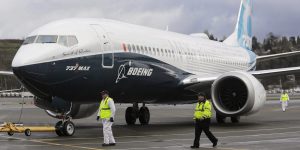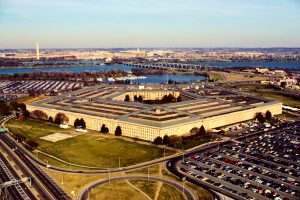If all goes according to plan, 3.21 million people will pass through Los Angeles International Airport in the two weeks surrounding the Thanksgiving holiday—equivalent, as the organization that runs the airport points out, to nearly 80 percent of the city’s population. Even on light days, the number of people who move through the 3,500-acre LAX complex is equivalent to the number that live in a smaller metro. So it’s no surprise that the daily thrum of LAX has been affected—disrupted, even—by the advent of ride-hail companies like Uber and Lyft.
The most visible manifestation of the airport’s struggles to adapt appeared this fall, when a new pickup area was opened for arriving travelers using Uber or Lyft to leave the airport. Airport officials called it LAX-it. The increasing popularity of those apps, plus ongoing construction and the growing number of flying passengers, had made a car trip around terminals downright nightmarish. Now instead of waiting for cars curbside, ride-hail and taxi riders must hop on a shuttle to a dedicated LAX-it parking lot seven to 15 minutes away from the terminals.
Want the latest news on ride-hailing in your inbox? Sign up here!
The first few weeks of LAX-it (kind of rhymes with “exit”) were chaotic. Travelers waited at LAX-it for an hour as their paired drivers made their way through confused traffic. Since then, the airport has expanded the lot, put up more signage, and more than doubled the number of shuttles moving people from the terminals to LAX-it. In mid-November, airport authorities reported that wait times now rarely exceed 10 minutes, even during the busiest travel times.
That’s a lot of work to accommodate a new(ish) form of transportation. And LAX isn’t alone in its struggles. Ride-hail has captured some former taxi riders, and transformed some public transit and shuttle passengers into customers too. That equals more traffic at airport curbsides, where drivers and travelers scramble to find places to alight and depart, and to find their app-designated matches.
The companies seem cool with it. According to a financial filing, 15 percent of Uber’s 2018 ride-hail gross bookings started or ended at an airport. (Lyft has not disclosed similar information.) In some ways, ride-hail seems tailor-made for airport trips. “The reason why people use [the apps] is because they’re cheaper than taxis and very reliable,” says Karina Hermawan, a postdoctoral researcher at the Singapore-MIT Alliance for Research and Technology who has studied ride-hail’s effects on airports. Ubers and Lyfts tend to be much faster than public transit, especially at an airport like LAX that has no easy connection to the Metro. (Free shuttles connect the airport to one line; a people-mover is expected to be completed by 2023.)
Such popularity has translated into big questions about infrastructure at airports, as in cities. Except in some ways, the effects of ride-hail on airports are more immediately existential—and airports have more tools to deal with them.
For one, the surge of ride-hail has threatened a big source of airports’ revenue, and that is parking. Parking accounted for 23 percent of North American airport revenue in 2016, according to a report by L.E.K. Consulting. Research by the National Renewable Energy Laboratory published last year looked at ride-hail services’ effects on four airports: Denver, San Francisco, Kansas City, Missouri, and Portland, Oregon. The researchers found that parking revenue per airport passenger has dropped between 3 and 7 percent per year since ride-hail showed up, a trend that suggests that parking demand at airports might be cut in half by 2035.
Most airports charge ride-hail companies to use their facilities, fees that are often passed on to customers. Many are raising those fees. In San Francisco, riders are charged an extra $3.60 to $5 on top of their fare, a rate that airport authorities raised last summer. Washington, DC, is considering a $1 fee jump, bringing the price to $5. New York’s fees are set to get higher next fall, reaching $2.50 for individual rides and $1.25 for shared ones. (Taxi riders will only pay an extra $1.25.) Still, those fees aren’t always enough to make up for the dip in parking revenues, which probably means airports need to find a long-term fix.



